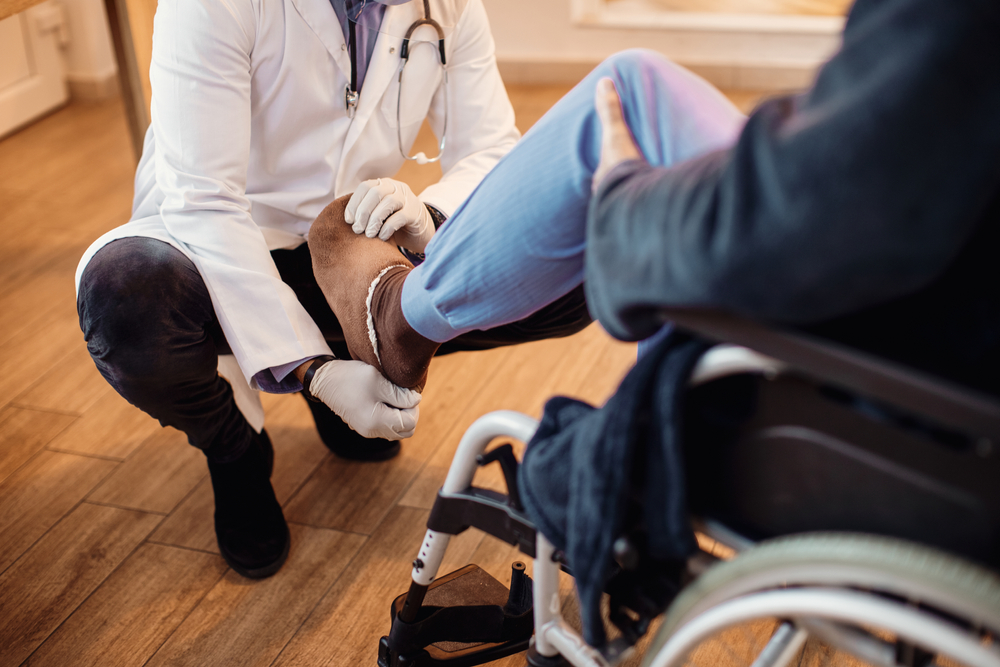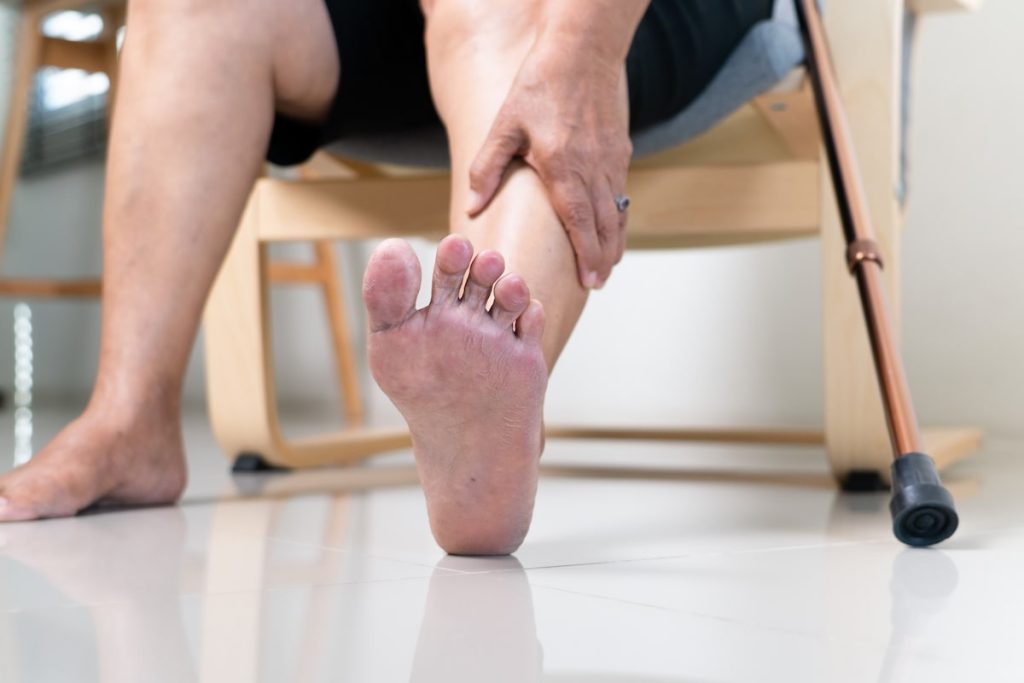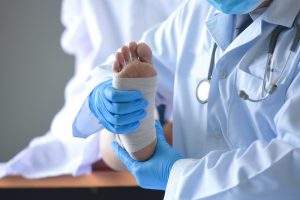Athletes, both amateur and professional, encounter a range of injuries that can sideline their progress. With each athlete’s body being a unique canvas, their injuries present distinct challenges, demanding not just a healer’s touch but a scholar’s insight into the musculoskeletal system.
However, the field of Orthopedic Sports Medicine has evolved significantly over the years, providing comprehensive care that spans from accurate diagnosis to advanced treatment options. This discipline focuses on understanding, treating, and preventing sports-related injuries, enabling athletes to return to their passion stronger and safer.
Join us in discovering how this specialized branch of medicine is not only about overcoming injuries but also about the treatment and role of orthopedics in the healing of sports injuries
 Defining The Role Of Orthopedic Surgeon In Sports Medicine
Defining The Role Of Orthopedic Surgeon In Sports Medicine
Orthopedic surgeons are not just specialists; they are the architects of athlete recovery. Their skills extend beyond mere surgery, encompassing the diagnosis, treatment, and prevention of sports-related injuries.
Specializing in the musculoskeletal system, these surgeons possess a deep understanding of how to enhance mobility and restore function through surgical and non-surgical means. Whether it’s a complex ankle fracture, a delicate ligament repair, or a precise joint replacement, orthopedic surgeons employ a blend of medical expertise and innovative therapy to return athletes to their peak performance.
The role of a sports medicine orthopedic in sports medicine is pivotal—addressing everything from acute injuries to chronic wear-and-tear issues. Through a blend of surgical skill and rehabilitative therapy, orthopedic surgeons ensure athletes can recover, rebuild, and return to their sport, often stronger than before. They don’t just repair; they transform adversity into opportunity, helping athletes rewrite their stories of triumph.
Understanding Sports Injuries
Sports injuries are categorized into two types: acute and chronic. Acute injuries occur suddenly during activity – like a sprained ankle or a fractured hand, while chronic injuries develop over time due to overuse – such as tendinitis or stress fractures. Recognizing the type of injury is the first step in the journey toward recovery. Here are the most common sports injuries:
- Sprains and Strains
- ACL Injuries
- Rotator Cuff Injuries
- Shin Splints
- Stress Fractures
- Tennis Elbow
Orthopedic Surgery: An In-depth Look
Orthopedic surgery, a cornerstone of orthopedic sports medicine, offers athletes not just treatment but the prospect of an active lifestyle. From joint replacement to minimally invasive arthroscopic procedures, orthopedic surgery provides comprehensive care capable of catering to complex sports injuries.
An athlete’s performance correlates significantly with the quality of orthopedic surgery. Knee surgery, for instance, can demystify this link. Beginning with an acute diagnosis of the issue, to the surgical treatment carried out by a highly skilled sports medicine orthopedic, and culminating with a tailored rehabilitative plan to ensure swift recovery. Success in this process means not just healing but also empowering the athlete to return to their sport, often stronger than before.
Beyond treatment, orthopedic sports medicine also emphasizes preventive care and minimizing recovery time—all crucial for maintaining an athlete’s peak performance. The unique blend of skills and experience offered by an orthopedic surgeon complements an athlete’s relentless pursuit of excellence, enabling them to transcend their physical barriers.
Initial Diagnosis Of Sports Injuries
The first step towards treatment is a thorough diagnosis. This involves a detailed medical history, physical examination, and, if necessary, diagnostic imaging such as X-rays, MRI, or CT scans.
An orthopedic specialist unravels the athlete’s medical history and performs a thorough physical examination tailored to their unique situation. The goal is to isolate the source of the athlete’s distress with unwavering precision.
Should suspicion arise, the orthopedic surgeon turns to the clarity provided by leading-edge diagnostic imaging—X-rays uncover bone fractures, MRI scans reveal soft tissue damage like ligament tears, and CT scans expose intricate musculoskeletal details. This synergy of specialized knowledge and advanced technology allows the physician to pinpoint the exact location and severity of the sports injury.
 Treatment Options For Orthopedic Sport Injuries
Treatment Options For Orthopedic Sport Injuries
Treatment options are as diverse as the injuries encountered. They range from conservative non-surgical approaches to intricate surgical interventions, all tailored to meet the unique needs of each athlete. Orthopedic surgeons and sports medicine orthopedics wield a comprehensive toolkit designed to not only address the injury but also rehabilitate the athlete for a return to peak performance.
Non-Surgical Treatment Options:
- Physical Therapy: Often the bedrock of treatment, physical therapy involves a tailored exercise regimen aimed at strengthening the affected area, increasing flexibility, and reducing pain, thus restoring mobility without the need for surgery.
- R.I.C.E. Method: This timeless principle of Rest, Ice, Compression, and Elevation remains a foundational approach for managing acute sports injuries, aiding in the reduction of inflammation and pain.
- Medication: Non-steroidal anti-inflammatory drugs (NSAIDs) can play a crucial role in controlling pain and swelling, facilitating a more comfortable recovery process.
- Injections: For certain conditions, therapeutic injections (such as corticosteroids or hyaluronic acid) can provide significant relief from pain and inflammation, potentially delaying or avoiding surgery.
Surgical Treatment Options
When non-surgical measures are insufficient, surgery may become necessary to repair the injury, restore function, and return the athlete to their sport. Orthopedic surgery encompasses a range of procedures, each highly specialized.
- Arthroscopy: A minimally invasive technique that allows surgeons to inspect, diagnose, and treat problems inside a joint through small incisions, minimizing recovery time.
- Ligament Reconstruction: This procedure, commonly required for athletes with torn ligaments (such as ACL injuries), involves repairing or replacing the damaged ligament to stabilize the joint.
- Joint Replacement: In cases of severe joint damage or arthritis, replacing the damaged joint with an artificial one can offer a new lease on life, restoring mobility and reducing pain.
- Fracture Repair: Surgical intervention might be necessary to realign and secure broken bones, ensuring proper healing and function.
Rehabilitation And Prevention
Rehabilitation is the bridge that connects an athlete from injury to optimal performance. Post treatment, it consists of a regimen of targeted, progressive exercises specifically designed to restore strength, flexibility, and balance.
Starting with gentle movements and gradually increasing in intensity, rehabilitation focuses on functionally restoring the affected area to its pre-injury state. Guided by the expertise of the orthopedic team, the athlete embarks on this journey of recovery, with each step bringing them closer to their inherent athletic prowess.
Yet rehabilitation isn’t the endgame in sports medicine. A paramount aspect of an athlete’s journey is injury prevention. This involves the adoption of preventive strategies such as proper warm-up and cool-down routines, ergonomic training techniques, and the use of correct equipment. These preventive measures serve to fortify the player’s resilience, decreasing the likelihood of injury recurrence and securing their longevity in their sport. In essence, rehabilitation gets athletes back in the game, and prevention ensures they stay there.
Navigating The Path With An Orthopedic Sports Medicine Physician
When sidelined by injury, athletes turn to a sports medicine orthopedic physician. Renowned for their skills and experience, these board-certified professionals deliver exceptional, comprehensive care. Their journey with you, the athlete, begins with a specialized orthopedic surgery consultation – the linchpin to understanding your musculoskeletal system and the cornerstone of your personalized treatment plan.
These specialists prioritize non-surgical options, eager to maintain your active lifestyle and minimize recovery time. However, at our state-of-the-art ambulatory surgery center, our surgeons stand ready for anything, whether it’s a tendon repair, joint replacement surgery, or the latest in minimally invasive surgical procedures. They also specialize in sports medicine and handle a range of issues, from acute injuries and diseases to chronic conditions like arthritis
Whether you are a weekend warrior or a seasoned professional, understanding the importance of this discipline can be the key to not only recovering from injuries but also preventing them in the first place. Orthopedic Sports Medicine is not just about healing; it’s about pushing the boundaries of human performance and resilience.
Your journey toward optimal health and peak performance is a marathon, not a sprint, and we are here to guide you every step of the way.
COMMITTED
TO EXCELLENT SERVICE
Our philosophy has been that the patient always comes first.
EMERGENCY OPERATOR
24 HOURS
Get emergency care from a specialist right from the start. Don’t go to an urgent care, ER or general doctor. Come straight the specialist.



